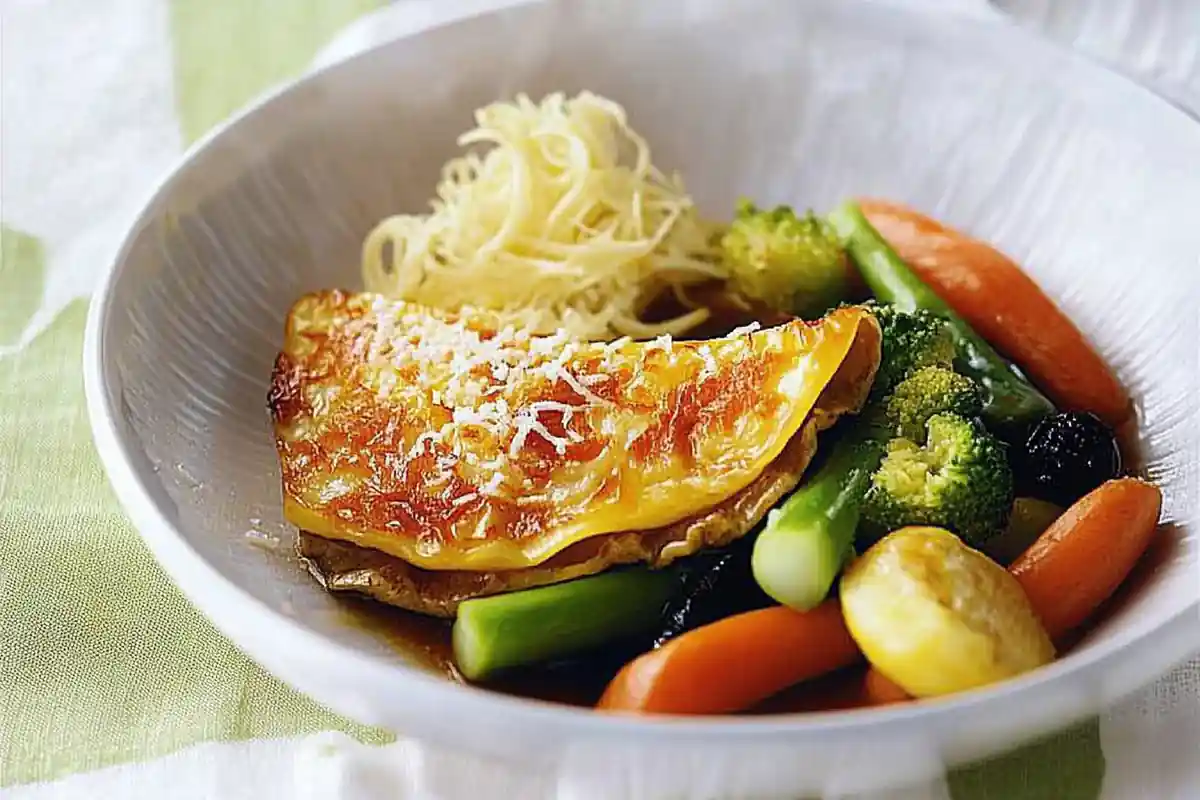Asian breakfast offers a diverse and flavorful start to the day. It is a departure from typical Western fare. It provides a unique culinary experience. This article explores some amazing dishes. These dishes provide a true taste of Asian culture.
Exploring the Diverse World of Asian Breakfast
Asian breakfast is not a monolithic concept. It varies drastically from region to region. Each country boasts its own unique traditions. These traditions also feature distinct ingredients and flavors. From savory to sweet, there is something for everyone. This makes the morning meal an exciting journey. It highlights the culinary creativity across Asia.
Savory Delights
Savory options are prevalent. Many Asian breakfasts revolve around rice and noodles. They often include proteins and vegetables. These dishes are packed with umami flavor. They provide sustained energy throughout the morning. These delicious meals are a great start to any day.
Sweet Sensations
Sweet options are less common but still enjoyed in some regions. These breakfast foods often include rice and tropical fruits. They use coconut milk and palm sugar. These choices can be a delightful departure. They are a sweet way to start the day.
A Journey Through Regional Asian Breakfasts
Let’s take a closer look at some specific examples. We can see the diversity within Asian breakfast traditions. Each region brings something unique to the table. The breakfast traditions reflect the local culture. They use locally available ingredients.
Japanese Morning Meals
Japan’s morning meal is often a balanced and light affair. It emphasizes fresh ingredients. It typically involves small portions of various dishes. Rice, miso soup, and grilled fish are staples. Pickled vegetables (tsukemono) add a tangy kick. A soft-boiled egg is another frequent addition. This traditional meal is both nutritious and satisfying. Image Placeholder: Alt Text – “Traditional Japanese Asian breakfast set.”
Chinese Breakfast Staples
Chinese breakfast options are incredibly diverse. These range from savory to sweet. Congee, a rice porridge, is a very popular choice. You can customize it with meats, vegetables, and seasonings. Steamed buns (baozi) are another common and convenient choice. They can be filled with various ingredients. Scallion pancakes, also known as cong you bing, are flaky and flavorful. These options provide both flavor and energy. It’s easy to see why they are a staple.
Korean Morning Traditions
Korean breakfasts often feature banchan, small side dishes. Rice is a mainstay, along with soup. Kimchi is a must-have. It provides a spicy and fermented flavor. Meat, such as bulgogi, may also appear. A traditional Korean breakfast is often flavorful and nourishing. Image Placeholder: alt text “Korean Asian breakfast including kimchi and bulgogi.”
Southeast Asian Breakfast Variations
Southeast Asia showcases unique breakfast options. These dishes blend sweet, savory, and spicy elements. Nasi lemak in Malaysia is a fragrant coconut rice dish. It’s served with fried chicken, peanuts, and chili paste. Pho in Vietnam is a hearty noodle soup. It is packed with herbs and spices. In Thailand, you might find jok, a rice porridge similar to congee. These dishes highlight the regional diversity and rich flavors.
The Nutritional Power of Asian Breakfast
Many Asian breakfasts offer nutritional benefits. They utilize whole grains, vegetables, and lean proteins. This provides a balanced start to the day. These foods also tend to be lower in processed ingredients. Therefore, they can help maintain a healthy diet.
Focus on Whole Grains
Rice and noodles are common choices. They provide sustained energy. They also deliver essential nutrients. Many Asian breakfasts include whole grains. These options offer fiber and other benefits.
Emphasis on Vegetables
Vegetables often feature prominently in Asian breakfasts. They are packed with vitamins and minerals. This provides a nutritious boost to the body. Many of these options are not as heavy as Western meals.
Lean Protein Sources
Fish, tofu, and eggs are common protein sources. They are lean and provide essential amino acids. This protein is crucial for satiety and muscle building. These choices are a valuable part of any diet.
The Art of Preparing Asian Breakfast
Many of these dishes require specific techniques. These techniques enhance their flavors and textures. Proper preparation methods are necessary for the desired results. The effort is typically worth the taste and nourishment.
Rice Preparation Techniques
Rice is a central part of many Asian breakfasts. Proper rice preparation is very important. Different varieties of rice are used depending on the meal. Each variety requires a slightly different cooking method.
Noodle Cooking Styles
Noodles are another popular ingredient. They are prepared in a variety of ways. Boiling, stir-frying, and steaming are all utilized. The right method enhances the taste and texture of noodles. Image Placeholder: alt text “Various types of Asian breakfast noodles.”
Combining Flavors
The art of Asian breakfast also lies in flavor combinations. Balancing sweet, salty, sour, bitter, and umami is key. The right balance leads to a more exciting and enjoyable experience. These combinations are a major element of the cuisine.
Asian Breakfast: A Cultural Experience
More than just food, Asian breakfast is a cultural experience. It reflects traditions and values passed down through generations. Sharing breakfast with family is a common practice. It is also a time to connect. This communal aspect elevates the simple meal. The breakfast provides a window into the heart of Asian culture.
Family Traditions
Breakfast is often a family affair. It brings family members together. They share food and start the day collectively. This communal nature is very important. It reflects the importance of family in many Asian cultures.
Regional Variations
Each region’s breakfast has its own story to tell. This includes unique ingredients and techniques. The regional differences reflect the diverse landscapes and traditions. Experiencing these variations is an insightful journey.
A Window to the World
Exploring different Asian breakfasts provides cultural understanding. The food offers a glimpse into the life of the people. The flavors and the rituals reflect the history of the culture. These meals are more than just nourishment. They are a way to experience the region. Image Placeholder: A collage of diverse Asian breakfast items.
Bringing Asian Breakfast Into Your Home
You can easily incorporate Asian breakfast into your routine. It offers a healthy change of pace. You will also get to experience new and unique flavors. Exploring new recipes can be fun and rewarding. There are many ways to include new options.
Exploring Recipes
There are many great resources online. They offer authentic Asian breakfast recipes. Experimenting with different options can expand your palate. You might even find some new favorites.
Sourcing Ingredients
Many Asian grocery stores offer the necessary ingredients. Some are also available at larger supermarkets. You will need staples like soy sauce and rice vinegar. You can easily collect the required items.
Trying New Things
Embracing new cooking techniques will also enhance your cooking. Don’t be afraid to experiment. Have fun and enjoy the process. You might just end up with a new favorite meal.
FAQ
What is a typical Asian breakfast?
A typical Asian breakfast varies greatly. It usually includes rice or noodles, vegetables, and protein. Common items include congee, miso soup, and rice porridge. Regional variations abound, showcasing the rich diversity across Asia.
What is a typical breakfast in Japan?
A typical Japanese breakfast features rice, miso soup, and grilled fish. Pickled vegetables and a soft-boiled egg are also common. The meal tends to be balanced and nutritious, with small portions of each dish.
What is the healthiest Chinese breakfast?
The healthiest Chinese breakfast often includes congee with added vegetables. Steamed buns filled with healthy ingredients are also a good choice. Avoid deep-fried or overly processed options. Focus on whole grains and plenty of vegetables for the best nutritional value.
What is a traditional breakfast?
A traditional breakfast refers to the typical meals and foods consumed in a particular culture. These breakfasts reflect local ingredients and eating habits. Traditional breakfasts offer insights into cultural practices. They often revolve around staples like rice, noodles, or local grains. They often include traditional cooking methods.

